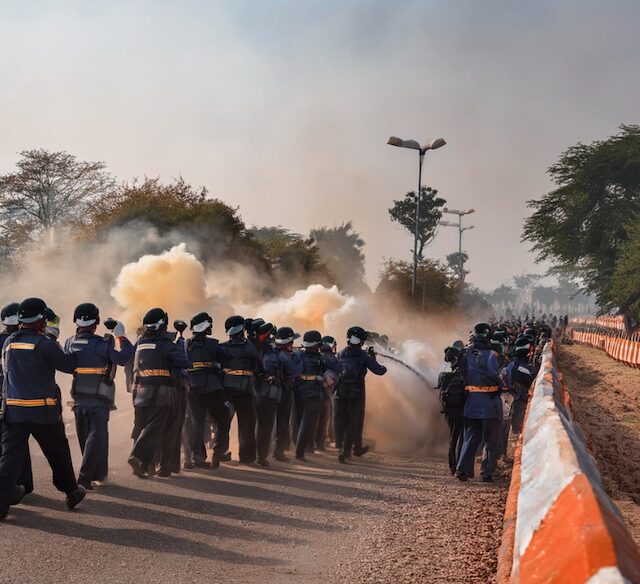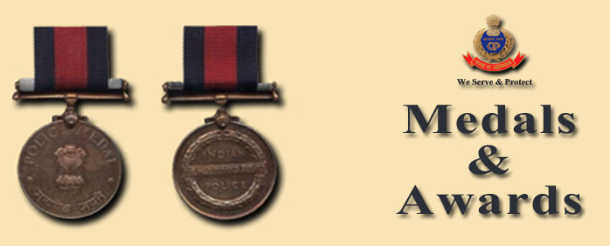Emile Borel, a famous French mathematician in the first half of the 20th century, had propounded the Infinite Monkey Theorem which stated that if a monkey is given a typewriter and allowed to pound away on its keys for an indefinite amount of time it would, sooner or later, produce the complete works of Shakespeare. Something similar holds true for the award of medals to policemen in India: if a police official serves long enough and rises high enough in the hierarchy, he would be festooned with more medals than Michael Phelps by the time he retires. Believe me, dear reader, I am not joking: I have yet to meet a retired IPS officer who has not received at least a couple of medals, regardless of the quality of the service rendered by him. As the holy Bible says: Ask and you shall receive. In the police, one doesn’t even have to ask, one will get it in the fullness of time just so that the tradition of “you scratch my back and I’ll scratch yours” remains embedded in the force’s esprit de corps. (We indulge in the same game in the IAS, by the way, but we play for higher stakes, like the Apex scale, Padma Bhushans and reemployment as “Advisors”).
For our friendly neighbourhood cops there is a whole buffet of medals to choose from- President’s Medal for Gallantry, President’s Medal for Distinguished Service, Medal for Meritorious Service, Indian Police Medal, Kendriya Grihmantri Dakshata Padak, Sewa Padak, Parakram Padak, etc. At this year’s Republic Day parade 1132 personnel were awarded the Gallantry medal and 102 the medal for Distinguished Service. Given the choice of medals and the numbers selected for the honour, one has to be a real wet sock or Keystone cop not to bag a medal or two before hanging up one’s holster.
This is not to say that all the medals awarded are contrived or undeserved; given the genuine challenges of law and order in this chaotic country, the dangers the police face can be real at times. I know of many outstanding police officers who fully deserved their decorations. For instance: a lady ASI in Rampur, Himachal Pradesh, one Ranjana Sharma has been recommended for the Distinguished Service medal for tracing 50 missing children and restoring them to their families. Such incidents and genuine appreciation warm the cockles of one’s heart. But unfortunately this is not always the case: given the way our system works, the puzzling fact that it is usually the senior officers who bag the awards and not the chaps in the bunkers, as it were, and the vague criteria adopted, these awards appear to have become just another perk of service, another suffix to the name and a by-line in one’s biodata. They do not inspire any genuine respect or admiration from the general public. And the most recent reported recommendation for the awards only confirms this suspicion.

Earlier this year newspapers reported that the Haryana government had recommended the award of Gallantry Medals for six police officers for exceptional courage and gallantry in handling-hold your breath- the farmers’ protests! If you will recollect, these were the farmers marching to Delhi in protest against the four farm bills; they were unarmed, did not damage any public or private property, did not indulge in any violence. The worst they did was to squat on the roads when stopped by the police. As per press reports at the time, it was even alleged that the Haryana police used unwarranted force on them and had even opened fire, killing at least one person.
So, what was the gallantry displayed by these four officers? Against innocent farmers who were neither criminals, naxalites, terrorists, insurgents, revolutionaries or any other species that threaten violence against the state? Gallantry means either bravery on a battlefield or courtesy/ chivalry towards women. Since it is the Haryana police we are talking about here, we can dismiss that second definition out of hand and concern ourselves only with the first. So, where is the bravery in using water canons, lathis, tear gas and even a live bullet or two on your own citizens, unarmed protestors (which included women, by the way)? And when was the Delhi- Chandigarh National Highway or the Shambhu border declared a battlefield? Did it ever occur to the dinosaurs in the Haryana secretariat that the recommendations only further stigmatise the farmers and add even more insult to the injuries inflicted on them, by equating them with enemies of the state ? Is this a serious proposal or a caricature of the whole system of medals and awards? Fortunately, the Home Ministry has not yet approved the recommendations and has raised some queries. A PIL has also been filed against these recommendations. One can only wish, and hope, that the proposal is incinerated at the earliest.
As I said before, police medals (unlike the Defence forces awards) don’t inspire much respect among the general public. Atrocious and ill conceived proposals like the instant one can only make a further mockery of the entire system and devalue the awards given to the few officers who actually deserve them.
| The author retired from the IAS in December 2010. A keen environmentalist and trekker he has published a book on high altitude trekking in the Himachal Himalayas: THE TRAILS LESS TRAVELLED.
His second book- SPECTRE OF CHOOR DHAR is a collection of short stories based in Himachal that was published in July 2019. His third book was released in August 2020: POLYTICKS, DEMOCKRAZY AND MUMBO JUMBO is a compilation of satirical and humorous articles on the state of our nation. His fourth book was published in July 2021. INDIA: THE WASTED YEARS – chronicles all the missed opportunities in the last nine years. His fifth book – THE DEPUTY COMMISSIONER’S DOG AND OTHER COLLEAGUES – released in September 2023, portrays the lighter side of life in the IAS and in Himachal. He published his sixth book, DISAPPEARING DEMOCRACY-DISMANTLING OF A NATION in March 2024; it is a commentary on events from 2021 to the present, a sequel to THE WASTED YEARS. Shukla writes for various publications and websites on the environment, governance and social issues. He divides his time between Delhi and his cottage in a small village above Shimla. He blogs at avayshukla.blogspot.com |


